Rice is the most important and basic food crop in the world. The widespread adoption of improved Rice varieties has resulted in great progress in Rice production. However, the demand for Rice in low-income countries continues to grow due to the growing population of Rice consumers and improved living standards. Important management factors should be considered during Rice crop development. These include planting methods, water, fertilizer, weeds, and pests and diseases. Let’s discuss the top 20 steps to boost Rice yield.
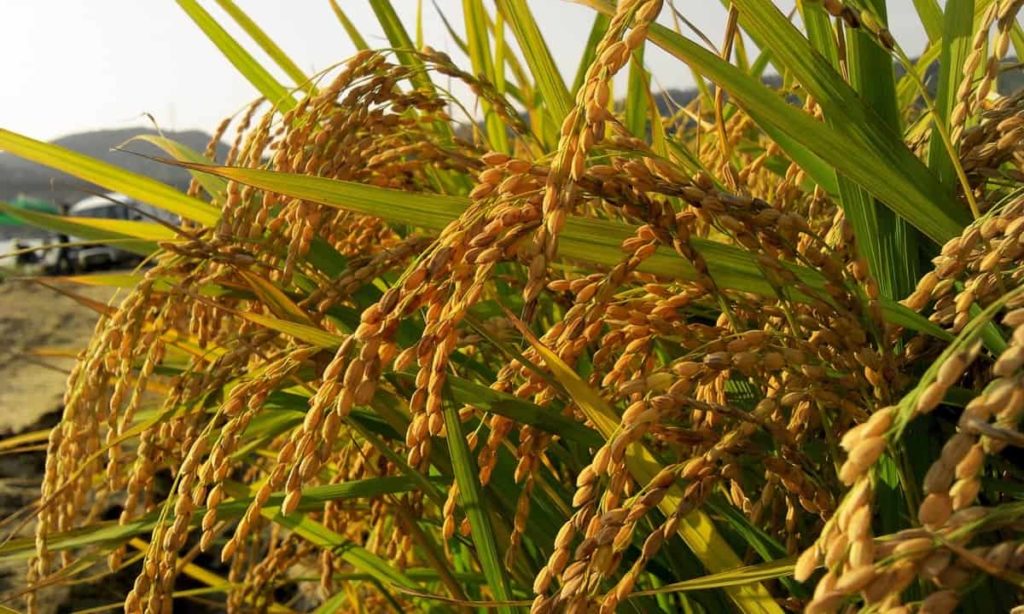
Improved Rice production includes improved soil, nutrient management, water use, and cultivation methods. The key factors for profitable Rice production will be avoiding unwanted pests and diseases, timely harvest, reducing reliance on chemical fertilizers, and using locally available resources such as green manure/FYM to attain good yield.
Top 20 steps to boost Rice yield
Step 1: Crop growth conditions for getting more yield
Rice is grown in 8 ° to 25 ° N latitudes and up to 2,500 meters above sea level under different conditions. It is a tropical plant and needs more heat and moisture for its successful growth. The average monthly temperature should be quite high at 24°C. It should be 20-22°C at sowing, 23-25°C at growth, and 25-30°C at harvest. The average annual rainfall required for Rice cultivation is 150 cm.
Step 2: Soil for increasing Rice production
Almost all soil types can be used for Rice cultivation provided the area has high humidity, adequate rainfall with irrigation facilities, and high temperature. The major soil types for Rice cultivation are black soil, red soil (loamy and yellow), laterite soil, red sandy, hill, and medium to shallow black soil. It can also be grown on silts and gravel. Cultivated soil is considered ideal if it contains a lot of organic matter and if it dries easily or becomes a puddle when wet.
Soil properties, such as available nitrogen, available phosphorus, and available potassium, greatly affect crop yields. To increase Rice production, recommended using 12.5 tons per hectare of compost or green manure at the rate of 6.25 tons per hectare.
Step 3: Select the high-yielding Rice variety
DRR Dhan 44 variety is characterized by high yield under limited water conditions. Kudrat-5 is also high yielding variety of Rice. Some other high-yielding Rice varieties are CR Dhan 413 (Reeta-Panidhan), CR Dhan 316, CR Dhan 317, CR Dhan 411, CR Dhan 512 (Satrughna), CR Dhan 803 (Trilochan), CR Dhan 702 and CR Dhan 703.
In case you missed it: The Best Fertilizer for Rice Crop: Organic, NPK, and Schedule for Paddy
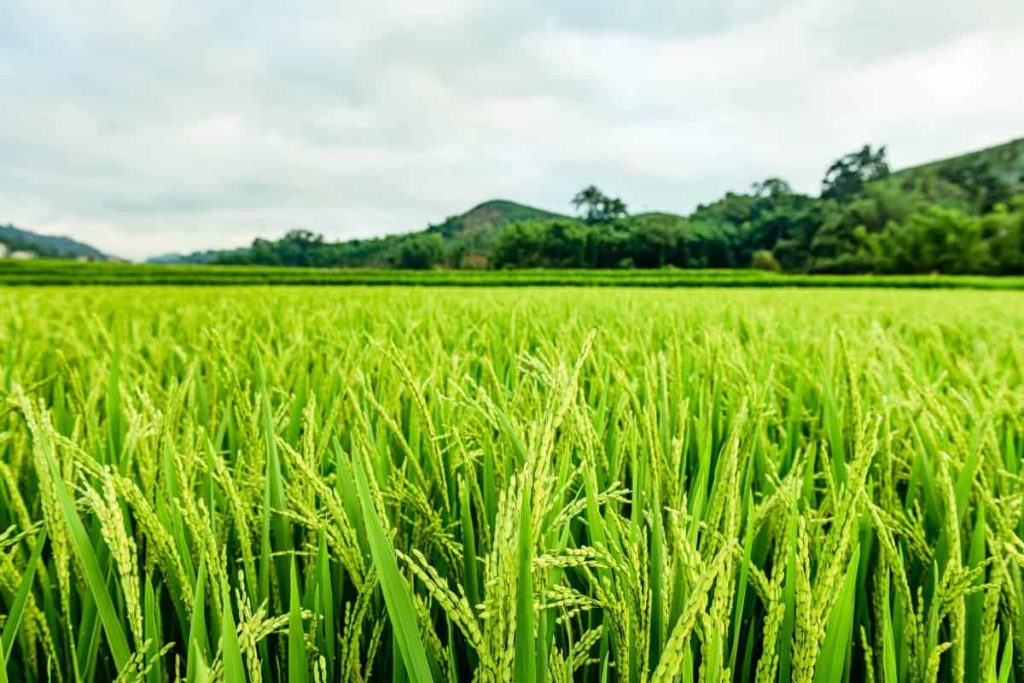
Step 4: High potassium will increase Rice yield
In most irrigated Rice fields, an adequate K fertilizer is essential. To ensure a good crop response to potassium fertilizer, achieve a healthy and productive crop.
Step 5: Techniques for boosting Rice production
There are some techniques used to improve Rice production and reduce emissions are best used;
- Water – Mid-season drainage and alternative wetting and drying to improve aerobic conditions.
- Nutrients – More balanced use of nutrients reduces methane emissions while boosting production.
- Tillage – Rice seeding techniques keep the soil stable without cultivating the land.
Step 6: SRI or Madagascar Rice cultivation for boosting yield
SRI Rice cultivation requires less water, costs less, and yields more. SRI is a farming technique aimed at increasing Rice production. It is a labor-intensive, low-water technique that uses young plants kept at a distance and weeded by hand with special tools. Proponents of SRI claim that the SRI or Madagascar Rice cultivation method increases productivity and income.
Unlike the traditional way, SRI is based on basic principles such as preparing a nutrient-rich soil nursery and not flooding it, using nylon ropes as markers for the same plant in the main field. Early planting and planting with a wide interval between each plant. Rice plants are kept wet and dry alternately instead of being flooded. The distance between plants provides more oxygen and reduces the competition between plants for nutrients and sunlight.
Step 7: Transplantation method gives more yield in Rice crop
This method is common in areas with fertile soil, abundant rainfall, and abundant labor supply. Firstly, seeds are sown in the nursery, and seedlings are prepared. The plants are uprooted and planted in the field after 4-5 weeks, already designed. The whole process is done by hand. So, this difficult method requires a lot of input and gives the highest yields.
In case you missed it: SRI Rice Cultivation – Method, Paddy Yield, Benefits
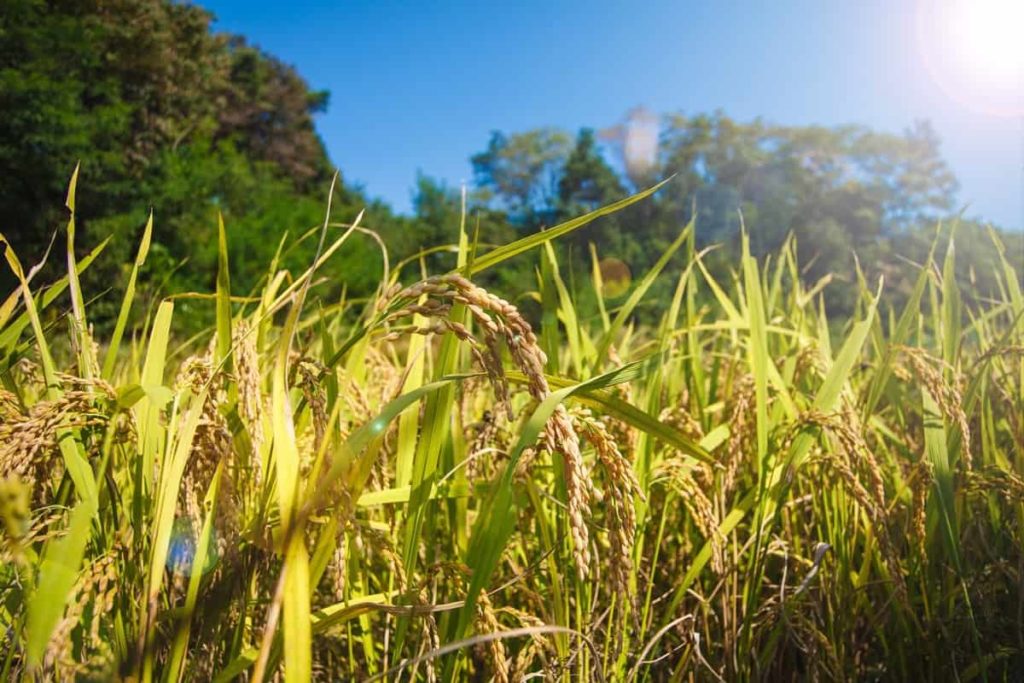
Step 8: Japanese method for maximizing yields
It involves using high-yielding varieties of seeds, sowing seeds in nursery beds, and transplanting plants in rows to make it easier to plant grass and fertilize. It also involves the use of large quantities of fertilizers to maximize yields. The Japanese method of Rice cultivation has been successfully adopted in the major Rice-growing regions.
Step 9: Crop rotation with Rice crop
Legumes are the most widely used crop for crop rotation with Rice. It is especially the case with places with a low water supply. In such areas, Rice is cultivated only once a year, and the rest of the year, the land is fallow. Therefore, planting legumes during this period will improve land use and help increase soil fertility.
Step 10: Use quality seeds to achieve better crop yield
The use of quality seeds in Rice cultivation is essential to attain better crop yields. Much of the success in cultivating healthy plants depends on the quality of the seed. Seeds sown for sowing should meet the following requirements.
- The seed should belong to the right type, which is suggested to grow.
- The seed must be mature and well developed in size.
- The selected seed should be free from signs of aging.
- Seed germination capacity should be high.
Rice is propagated from seeds. Therefore, seed selection plays an essential role in production.
Step 11: Direct seeded Rice
Crop cultivation in topo sequence helps better water use. While Rice is grown on terraces or slopes, it should be produced at the lower portion of hill slopes where flow is concentrated. Water can be harvested in flat or terrace land to increase crop yields by providing peripheral bunding (15-20 cm height). Saturation and submergence are adequate for direct-sown Rice.
Step 12: Irrigation affects crop yield
Water supply strongly affects the Rice crop. The constant flooding of water generally provides the best environment for Rice growth. Wherever an irrigation facility is available, watering should be done during the major stages of growth, such as tillering, panicle initiation, panicle emergence, and grain filling stage, to get maximum yield.
In case you missed it: Organic Paddy Farming (Rice) – Production, Cultivation
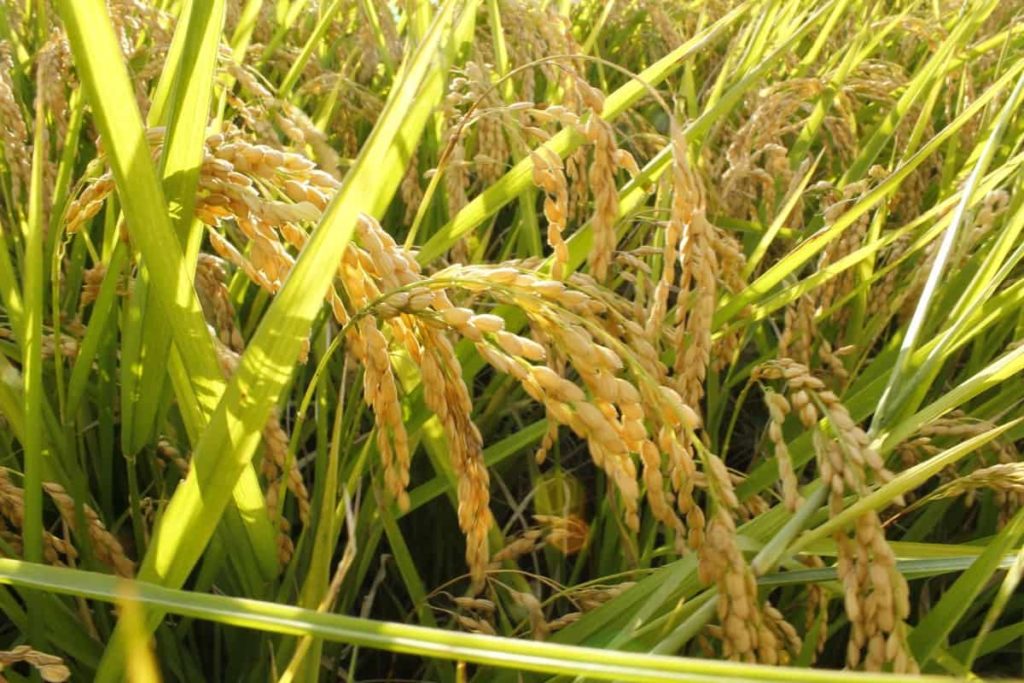
Step 13: Cultivate Rice through drip irrigation
Grow more in less water – Drip irrigation reduces water consumption through proper water supply to the crop. So, for one kg of Rice that you used to grow in 5000 liters of water, now you only need 1500-1600 liters. At large, you get higher crop yields in less water.
Shift to higher-yielding crops – Drip irrigation allows you to select desired close spacing crop after Rice in crop rotation. You can shift from low-income crops to higher-income crops after Rice cultivation.
Grow a high-quality, marketable Rice crop – Roots are submerged in Rice cultivation. They use heavy metals and increase the arsenic in the crop, which reduces the crop’s market value. However, drip irrigation helps to reduce the amount of arsenic by about 90%, resulting in the development of high-quality and marketable crops.
Making High Profits – With drip irrigation, you reduce labor costs, achieve water efficiency, increase crop yields, and improve crop quality. All of these factors reduce investment and increase profits.
Step 14: Tips for improving the quality of Rice
Many factors determine the final quality of Rice produced on the farm. Good quality Rice is required for best milling results, and mixing different types should be avoided before milling. The below factors are essential in determining the final quality of the Rice;
- Prepare the fields evenly and level as much as possible.
- Keep the water level in the field even and remove the field at the right time before harvesting.
- Check the field regularly for pests and control pests if needed.
- Keep fields free of weeds.
- Choose the correct seed date and rate.
- Ensure uniform crop nutrition throughout the field and apply nutrition on time.
- Harvest grains with proper moisture and avoid delaying threshing and drying.
- Reduce the moisture content of dry Rice to 14%.
- Store Rice in proper moisture and protect it from pests and insects.
In case you missed it: Black Rice Cultivation, Farming Practices In India
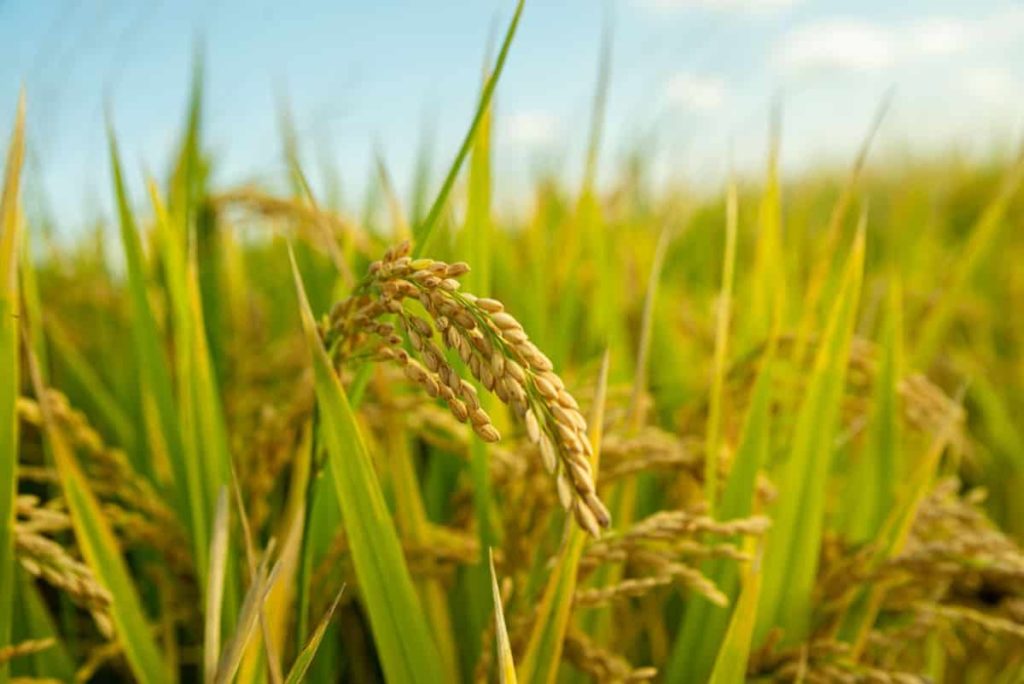
Step 15: Organic fertilizers for faster growth
Use organic fertilizers like Jeevamrutha, Panchgavya, etc., three times for healthier and faster growth.
Step 16: Balanced application of fertilizers for increasing crop yield
Balanced application increases the efficiency and enhances the soil’s physical, chemical, and biological environment, thereby increasing crop yields. The use of green manure and farmyard manure will increase the growth and production of Rice. Nitrogen increases plant height, panicle number, leaf size, spikelet number, and some filled spikelets, which largely determine the productivity of a Rice plant.
The panicle number is primarily influenced by the number of tailors formed during the plant stage. The spikelet number and the number of filled spikelets are mainly determined during the reproductive phase. The application of nitrogen fertilizer in split doses reduces losses, facilitates its efficient use, and improves the growth and yield of Rice.
Step 17: Bio-fertilizer application for improving Rice yield
Apply fresh Azolla by 10 tonnes/hectare + 50% N urea improves Rice production.
Step 18: Potassium (K) nutrition is critical for maximizing Rice grain yields
Proper potassium (K) in Rice promotes;
- Tillering
- Panicle development
- Spikelet fertility
- Nutrient uptake of nitrogen and phosphorus
- Leaf area and leaf longevity
- Disease resistance
Step 19: Effective control of pests and diseases
Farmers lose an estimated 37% of their Rice crop each year to pests and diseases. In addition to good crop management, a timely and accurate assessment can significantly reduce losses. The best control of pests and diseases is prevention. The below tips can be followed to limit the incidence of pests and diseases in the Rice crop.
In case you missed it: Rice Mill Subsidy, Loan, Permission, License, Schemes
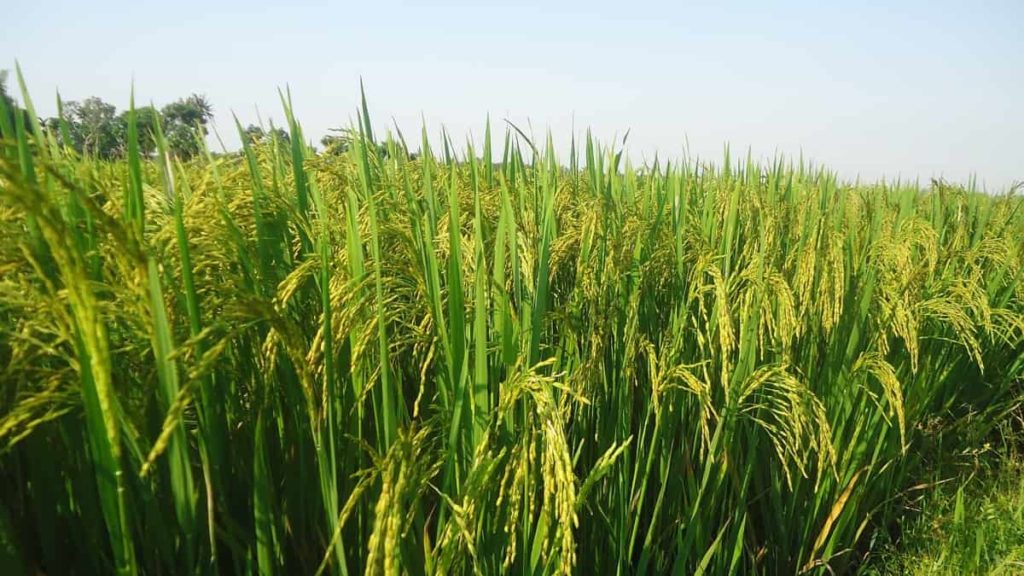
- Practice good cleaning of equipment.
- Clean the fields between seasons by arranging stubbles and ratoons and caring for and repairing bunds.
- Use clean seeds and resistant varieties.
- Don’t use too much fertilizer. It is essential to follow specific fertilizer recommendations as too much nitrogen can increase susceptibility to certain pests and diseases.
- Plant at the same time with your neighbors to minimize the pressure of insects, disease, birds, and rats on individual fields.
- Encourage enemies of natural pests.
- Do not apply pesticides within 40 days of planting.
When deciding to use chemicals for pest and disease control, it is important for;
- Use well-maintained spray tools that have been appropriately calibrated.
- Apply the dose recommended by the manufacturer and
- Follow safety precautions for mixing and spray applications.
Step 20: Harvesting on time will improve crop yield and grain quality
Timely harvesting is essential for maximum yield and grain quality. Immature grains break when milled and do not germinate when used for seed. Shattering and bird attacks can cause great damage if the harvest is delayed. Grain spoilage will also reduce the quality, which will result in breakage and downgrading due to the undesirable color of the grain. Rice should be harvested when 80-85% of the panicles change color from green to straw. The Rice is cut with a sharp sickle or knife when cut by hand. In some areas, Rice is harvested mechanically using threshers or combined harvesters.
- How to Make Houseplants Bushy: Effective Tips and Ideas
- Innovative Strategies for Boosting Coconut Pollination and Yield
- Pollination Strategies for Maximum Pumpkin Yield
- The Complete Guide to Chicken Fattening: Strategies for Maximum Growth
- Natural Solutions for Tulip Problems: 100% Effective Remedies for Leaf and Bulb-Related Issues
- Revolutionizing Citrus Preservation: Towards a Healthier, Greener Future
- Natural Solutions for Peony Leaf and Flower Problems: 100% Effective Remedies
- Maximizing Profits with Avocado Contract Farming in India: A Comprehensive Guide
- Natural Solutions for Hydrangea Problems: 100% Effective Remedies for Leaf and Flowers
- The Ultimate Guide to Choosing the Perfect Foliage Friend: Bringing Life Indoors
- From Sunlight to Sustainability: 15 Ways to Use Solar Technology in Agriculture
- The Ultimate Guide to Dong Tao Chicken: Exploring from History to Raising
- The Eco-Friendly Makeover: How to Convert Your Unused Swimming Pool into a Fish Pond
- Mastering the Art of Delaware Chicken Farming: Essentials for Healthy Backyard Flocks
- 20 Best Homemade Fertilizers for Money Plant: DIY Recipes and Application Methods
- How to Craft a Comprehensive Free-Range Chicken Farming Business Plan
- Brighten Your Flock: Raising Easter Egger Chickens for Beauty and Bounty
- How to Optimize Your Poultry Egg Farm Business Plan with These Strategies
- Subsidy for Spirulina Cultivation: How Indian Government Schemes Encouraging Spirulina Farmers
- Ultimate Guide to Raising Dominique Chickens: Breeding, Feeding, Egg-Production, and Care
- Mastering the Art of Raising Jersey Giant Chickens: Care, Feeding, and More
- Ultimate Guide to Raising Legbar Chickens: Breeding, Farming Practices, Diet, Egg-Production
- How to Raise Welsummer Chickens: A Comprehensive Guide for Beginners
- How to Protect Indoor Plants in Winter: A Comprehensive Guide
- Ultimate Guide to Grow Bag Gardening: Tips, Tricks, and Planting Ideas for Urban Gardeners
- Guide to Lotus Cultivation: How to Propagate, Plant, Grow, Care, Cost, and Profit
- Agriculture Drone Subsidy Scheme: Government Kisan Subsidy, License, and How to Apply Online
- Ultimate Guide to Raising Araucana Chickens: Breed Profile, Farming Economics, Diet, and Care
- Bringing Hydroponics to Classroom: Importance, Benefits of Learning for School Students
- Ultimate Guide to Raising Polish Chickens: Breed Profile, Farming Economics, Diet, and Care
- Ultimate Guide to Raising Australorp Chickens: Profile, Farming Economics, Egg Production, Diet, and Care
- Silkie Chicken Farming: Raising Practices, Varieties, Egg Production, Diet, and Care
- Sussex Chicken Farming: Raising Practices, Varieties, Egg Production, Diet and Care
- Homemade Feed Formulations for Livestock: Discover Cost-effective Starter to Finisher Feed Recipes
- 20 Best Pig Weight Gain Supplements: Top Swine Weight Gain Formulas
- Ultimate Guide to Elderberry Farming: Propagation, Planting, Yield, Cost, and Profit
Sir I am a new farmer I don’t know anything about Rice cultivation,as far potassium is concerned whether it is available inNPK form or available separately and the time of application and quantity to be used. I shall be much obliged if you detail about it.
Thank you